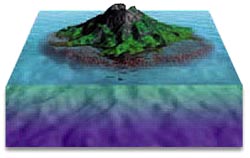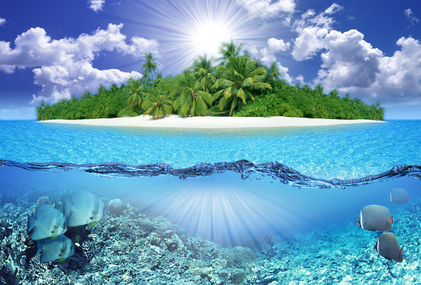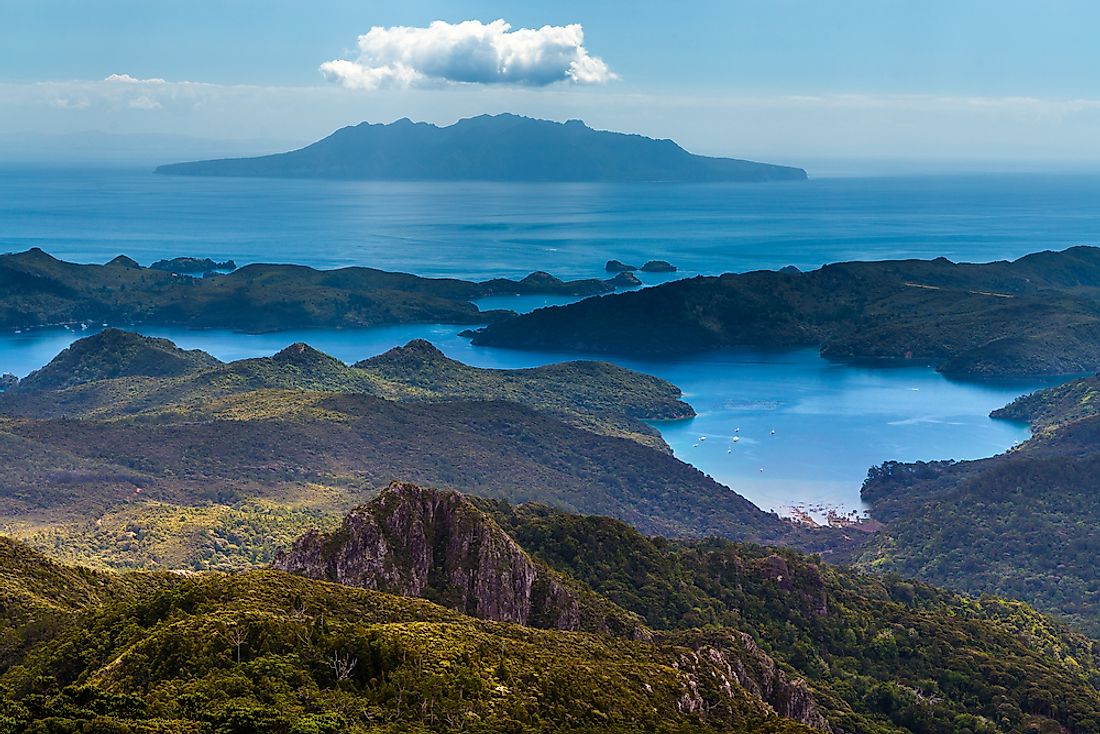How are islands formed
How are islands formed
DK Earth: Islands
An island is an area of land smaller than a continent and entirely surrounded by water. Islands range from single rocks to huge landmasses, such as the island of Greenland. There are two main types of island—continental islands and oceanic islands. Islands are also found in rivers and lakes.
WHAT IS A CONTINENTAL ISLAND?
Continental islands are found in shallow seas off large landmasses. They were formed when rising seas (for example, at the end of an ice age) cut off part of the land from a continent. Great Britain is an example of a continental island.
HOW ARE VOLCANIC ISLANDS FORMED?
Volcanic islands are formed by volcanic activity on the seabed, often near the boundaries of the tectonic plates that form Earth’s crust. Where two plates pull apart, lava erupts to form an undersea ridge. Layers of lava build up until a ridge breaks the sea’s surface to form an island. Sometimes a whole chain of volcanic islands, called an island arc, is formed in this way. Some island arcs contain thousands of islands.
AN ISLAND IS BORN
In November 1963, sailors saw a plume of smoke and ash rising from the sea off Iceland during an undersea volcanic eruption. A day later, as the eruption continued, lava broke the surface to form land. The new island was named Surtsey, after the Norse god of fire.
WORLD’S LARGEST ISLAND
Greenland, in the Arctic Ocean, is the world’s largest island, at 0.85 million sq miles (2.2 million sq km). As huge as it is, few people live there because it is almost permanently covered in snow and ice.
HOW DO CORAL REEFS FORM?
A coral reef is formed from the hard, shelly remains of coral polyps. These tiny creatures live in large colonies on rocks in shallow, sunlit water, such as the top of a seamount. When they die, their chalky, tube-shaped skeletons remain, and new, young coral grows on top. The coral skeletons build up over many years until they reach the sea’s surface, forming a reef.
FORMATION OF A CORAL ATOLL
A fringing coral reef forms in the shallows around the base of a seamount, or volcanic island, in warm tropical waters.
A barrier, or offshore, reef is formed as the coral slowly builds up, while the cone is worn away or covered by rising sea levels.
A ring-shaped coral atoll with a central lagoon is all that remains after a seamount is submerged.
The McGill Tribune
Published by the SPT, a student society of McGill University
Ask a Geologist: How do islands form?
More in Ask a Scientist:
Earth’s surface is constantly changing due to a number of natural processes: Rivers transport sediment, glaciers carve valleys, and colliding tectonic plates build mountains. One of the planet’s most impressive talents, however, is the formation of islands.
In recent decades, various new islands have popped up. The island of Nishinoshima off the coast of Japan formed from an eruption in 1973, and Yaya Island formed in 2013 near Russia. In Newfoundland and Labrador, sea level rise and coastal erosion turned a former peninsula into an island called Sandy Point in the 1960s.
Although islands can be formed by a variety of processes—such as clashing continents, sediment deposition, and glacial retreat—one of the most prominent ways in which they appear is through the convection currents of the mantle, the layer of earth directly below the crust. These currents cause Earth’s tectonic plates to move and interact with one another, which leads to phenomena like earthquakes and continental drift. When tectonic plates are pushed and pulled apart, they form volcanoes, causing eruptions when the plates are pulled apart. As hot magma rises from the crevasses created, it eventually builds up to form islands.
According to Christie Rowe, a geologist and associate professor in the Department of Earth and Planetary Sciences, there are two types of submarine volcanoes that create islands: Island arc volcanoes and hotspots.
In this way, a convergence of two plates can result in a long belt of simultaneously active volcanoes, like those of Guam, Tonga, Fiji, and Alaska’s Aleutian Islands.
On the other hand, hotspots are point sources of magma that are not associated with a plate boundary. They typically form island chains like Hawaii, Réunion, and the Azores.
“[Hotspots] can also come up under continents,” Rowe said. “Yellowstone [National Park] is a mantle melt source that’s not associated with a plate boundary.”
The mechanisms that create hotspots are not fully understood. Nevertheless, all volcanoes essentially work in the same way. An island is formed when magma builds up and breaks the ocean’s surface. In some cases, like the island of Hawaii, land masses merge together.
“In terms of becoming an island, it depends on how deep [the] water they’re in [is] and how productive their magma source is,” Rowe said.

Surtsey Island (arctic-images.com)
In the 1960s, a three-year-long volcanic eruption off the southern coast of Iceland gave birth to a new island that has since been colonized by plant and animal life. Now a UNESCO World Heritage Site, Surtsey is a valuable location for scientists to study ecological succession.
“There are whole ecosystems basically based off the colonization of volcanic islands,” Rowe said.
Still, the transformation of a barren magma island to one able to support life is not unique to Surtsey. Earth is often called the ‘ Dynamic Planet ’ because it is always changing — volcanic islands like Hawaii and Réunion remind us of nature’s ability to do so.
Island
Clicking on the island landforms will enlarge the picture of the islands. You will stay on this landform page for your viewing pleasure.
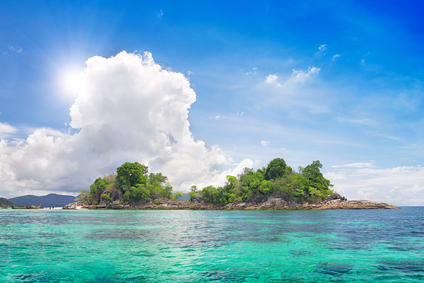
An island has 2 main characteristics
Example of island landforms:
The Hawaii Islands
Apostle Islands of Lake Superior and Wisconsin
What is an Island Landform?
An island landform is land that is completely surrounded by water. It can be any type of land. The island can also be surrounded different types of water such as a sea, ocean, river and lake.
There are a lot of famous islands in the world. One of the most famous island landforms are the Hawaii islands. There are 100’s of islands in the State of Hawaii. They are all mostly gorgeous and tropical. Another famous island is the Galapagos Islands. It has many different types of species. It was made famous by the famous scientist and explorer Charles Darwin.
How are Islands Formed?
Islands are formed in a variety of ways. We will discuss three ways islands are formed. When you take a look at the islands of Hawaii, they were formed by volcanoes. Volcanoes would keep erupting causing land to start to form under water. This land would keep on rising up as the volcano erupted. Over thousands of years, the land would go above the water, thus creating land that is surrounded by water or another word, an island.
Islands can also be formed when continental plates collide. When they collide they push land up creating an underwater mountain that goes above land. This land, when surrounded by water, is called an island.
Another way an island landform can be made is through deposits of sand that came from erosion. When sand and other debris are picked up from a water current through erosion, it can be deposited in certain areas. Over time this land creates an island.
Did you know that islands can also be man made? The country of Qatar (which is an island itself) has made islands in many shapes to build communities on.
Please also see barrier islands and river island for other type of island.
Island Definition:
An Island landform is an area of land smaller than a continent that is surrounded by water.
Types of Islands
An island is a fraction of landmass that is surrounded by water. There are countless islands around the world located in oceans, lakes and rivers. They have distinct climates and inhabitants according to their geographical position.
What Are the Different Types of Islands
There are six different types of islands based on how they form: 1) Continental, 2) Oceanic, 3) Coral, 4) Barrier, 5) Tidal, and 6) Artificial.
1. Continental Islands
Continental islands were once part of the mainland a long time ago, but due to the shift of the tectonic plates these landmasses separated from the continents, forming islands surrounded by water.
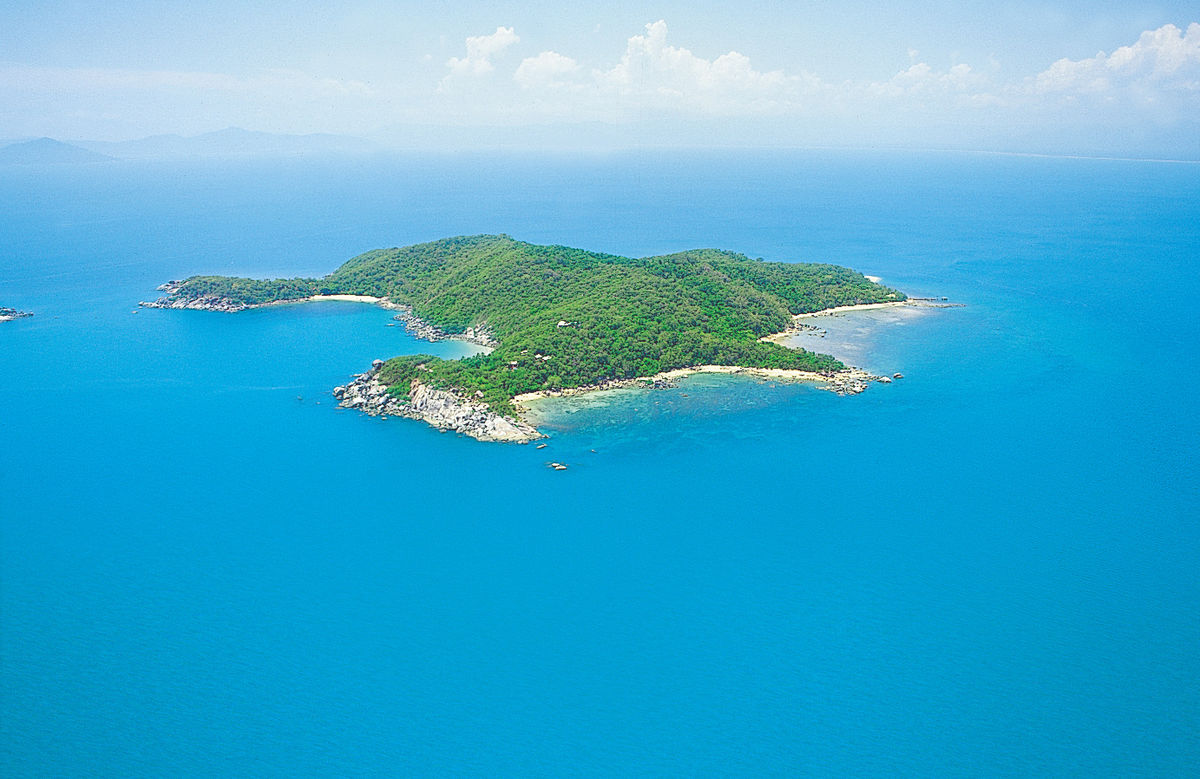
Different Ways Continental Islands Can Form
Due to Shifting of Continents: Scientists believe that, millions of years ago there was only one landmass in the world, which is referred to as Pangaea. Over time, Pangaea broke apart and drifted away, thus forming the different continents of the world and the continental islands as they are today.
Examples: Greenland and Madagascar
Due to Glaciations: Another evolvement that has led to the formation of the continental islands is due to the rise of the sea level. About 18,000 years ago, during the most recent glacial period, most of the earth was covered by ice. As the ice melted, the sea level rose and it flooded the low lying areas of the continents, thus separating the landmasses from the mainland.
Examples: The British island which used to be a part of mainland Europe
Due to Accumulation by River: These islands form when sand, silt, and gravels deposit in the deltas or the lower course of river over a long period. Some river islands may also disappear when the volume of river water or its speed increases.
Examples: Marajó in Amzon river, Brazil and Majuli in Brahmaputra river in India
2. Oceanic Islands
Oceanic islands are formed due to volcanic eruptions in the ocean floor. They are also referred to as ‘high islands’ regardless their height. Due to eruptions, lava layers build up and it protrudes above the sea level, thus forming such ocean islands.
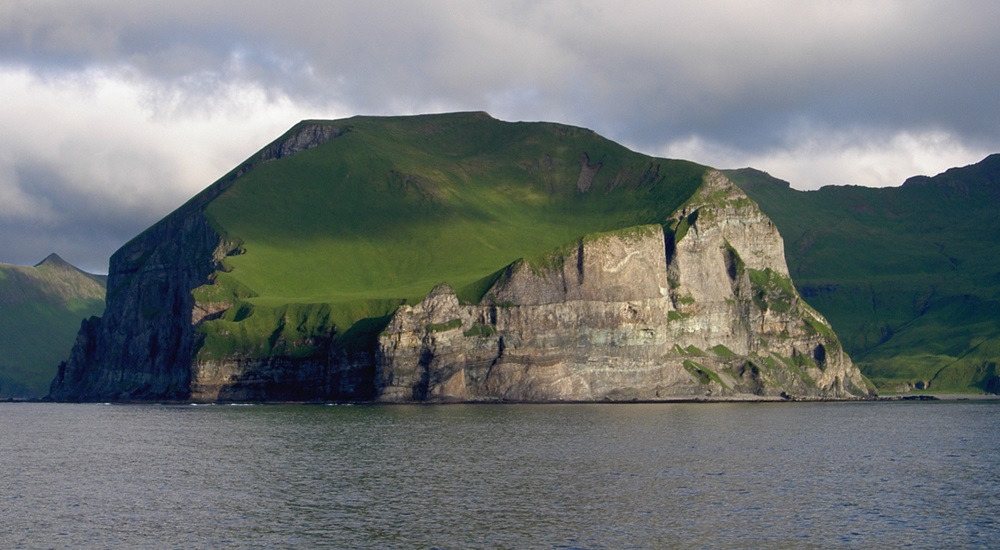
Different Ways Oceanic Islands Can Form
Due to Subduction of Tectonic Plates: Due to shift of tectonic plates, heavy oceanic plates subduct beneath the light continental plates, causing volcanic eruptions that lead to formation of oceanic islands. The Japanese islands are situated in such subduction zone of four tectonic plates, including two continental plates of North America and Eurasia with two oceanic plates of the Pacific and Philippines. That is the reason Japan is so prone to volcanic and seismic activity.
Examples: Aleutian Islands
Due to Rifts in Tectonic Plates: When tectonic plates split up or rifts apart, causing enough lava to spew up and form an island.
Examples: The island of Surtsey formed when the Eurasian plate split away from the North American plate in 1963. It is the world’s newest island.
Due to shifting of hotspots: Another phenomenon of formation of oceanic islands is when continents shift over ‘hot spot’. A ‘hot spot’ is a crack on the earth crust through which hot lava spills out. Even if the crusts shift, the hot spot remain stable beneath the crust.
Examples: The Hawaiian Islands in the Pacific Ocean which is formed by a single hotspot.
3. Coral Islands
Coral islands are formed by small sea creatures called Corals and other associated organic materials. Corals, found mainly in shallow depth of tropical and sub-tropical warm water, produce an external skeleton made of limestone (calcium carbonate) that accumulates to form small to large landmasses as islands.
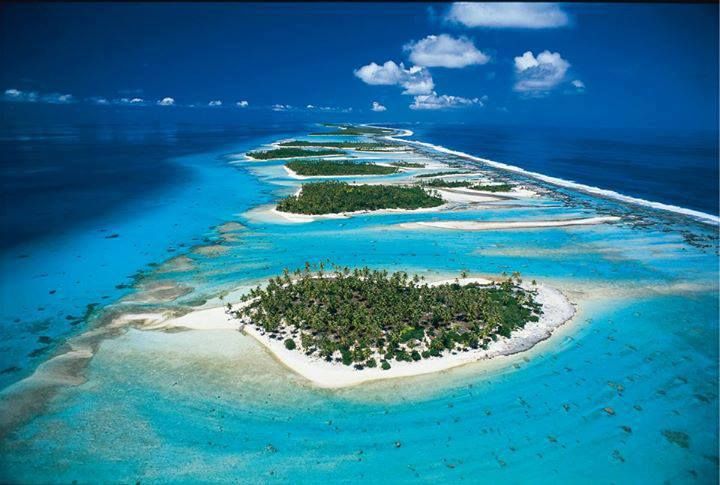
Different Ways Coral Islands Can Form
By Forming Coral Reefs: Coral grows in colonies, and gradually these colonies expand from the sea floor and protrude above ocean surface forming coral islands. Sand, rocks, as well as other inorganic and organic materials helps to adhere the coral detritus to form the reefs. Coral reefs are home to wide variety of flora and fauna.
Examples: The island of Bahamas in Atlantic Ocean and Caribbean Sea
By Forming Atoll: Coral islands can also grow as a coral reef surrounding a lagoon on the outskirts of volcanic oceanic island. These coral islands are called atoll. As a volcanic ocean island is moved from the hot spot due to plate tectonics, the island slowly sinks into sea and the coral continues to grow.
Examples: Tuamotus Islands in French Polynesia, Caroline Islands in the north of New Guinea
4. Barrier Islands
Barrier islands are narrow pieces of landmass occurring in chains that lie parallel to the coastline but separated from the mainland by lagoons. These islands protect the mainland from ghastly storm and high sea waves and act as a barrier, so they are called as barrier islands. Chains of these islands can be found along approximately 13-15% of the world’s total coastlines.
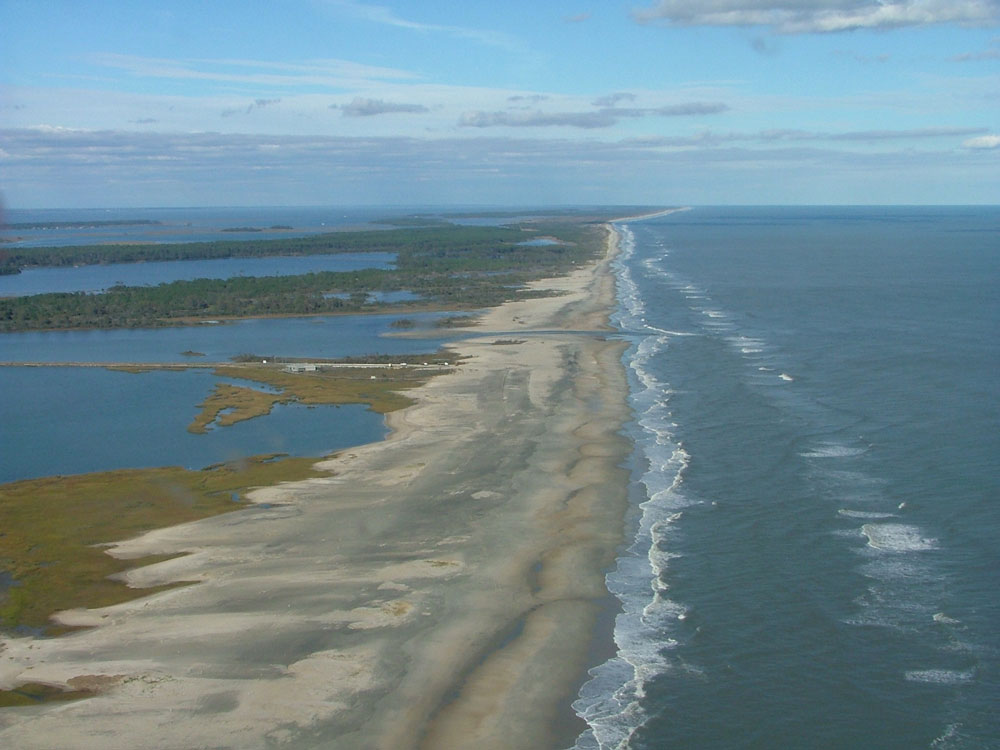
Different Ways Barrier Islands Can Form
Due to Accumulation by Ocean Currents: Some barrier islands are parts of continental islands, formed due to deposition of sediments like sand, gravel and silt accumulated by ocean current. Sandbars are an example of barrier islands formed due to high-water level during storms or during the high-tide season by the accumulation of sand along the coast. Over a period of time, these sandbars might also be eroded away by the same ocean currents.
Examples: Virginia barrier islands
Due to Glaciations: Another type of barrier islands is formed during the end of the last Ice Age. When the glacier melted, the sea levels rose, coastal areas were submerged and stretches of sandy islands were left behind.
Examples: Outer Banks islands off the south-eastern coast of the US
By Accumulation of Corals: Some barrier islands can also be barrier islands made from billions of coral exoskeletons.
Examples: The Great Barrier Reef in the Coral Sea off the Queensland coastline in Australia
5. Tidal Island
Tidal islands are part of continental islands such that they remain separated from the mainland only during the high tide. Here, the connecting land between them is not completely eroded but submerged because of the rising water levels.
Examples: The island of Mont Saint-Michel in France, and Cramond Island in Scotland
6. Artificial Island
As the name denotes, artificial islands are originally created by humans rather than any natural phenomenon. They are built to provide more land for infrastructural development, agriculture, tourism and recreational activities.
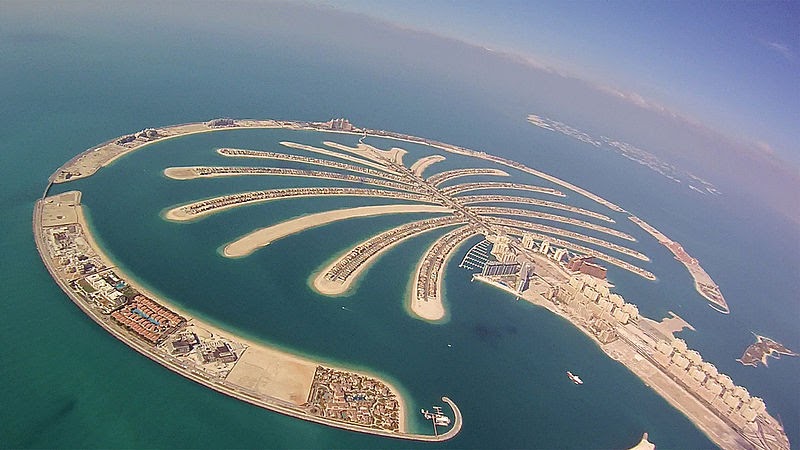
Different Ways Artificial Islands Can Form
By Extension of Existing Islands: Some artificial islands are constructed as the extension of already-existing islands by draining water around them or adding land-forming materials to extend them.
Examples: 75% of the area of Hong Kong international airport was created by the extension upon the existing islands of Chek Lap Kok and Lam Chau
By Reclaiming New Land: Another type of artificial island is constructed by land reclamation from sea using natural materials like sand, rocks, gravel and synthetic materials like concrete.
Examples: Flevopolder in the Netherlands (the largest artificial island with an area of 970 sq.km), Palm Jumeirah and Palm Jebel Ali in Dubai
Article was last reviewed on Monday, April 27, 2020
How Many Types Of Islands Are There?
Barrier Islands are one of the several types of islands that exist.
Land surrounded by water on all sides is called an island. Although one might consider the continents to be islands, they are not regarded as islands due to their massive size. Australia is the smallest continent and all other land surrounded by water that is smaller than Australia, are labeled as islands.
The six major types of islands have been discussed below:
1. Continental Islands
Continental islands represent land masses that were connected to a continent at some point in time but have separated from the continents by the shifting of tectonic plates to form islands surrounded on all sides by water.
How Are Continental Islands Formed?
A number of continental islands were formed when the shifting continents of the world broke apart millions of years ago. According to scientists, initially, there was only one massive mass of land called Pangaea. Over a period of time, movements of the Earth’s crust led to the crust breaking into several pieces and drifting apart. Such tectonic activities gave birth to the different continents of the world and led to the formation of the continental islands. Greenland and Madagascar, both very large islands, were formed in this manner.
Another process of formation of continental islands took place due to sea level changes thousands of years ago. During the most recent glacial period, about 18,000 years back, much of the continental land was ensheathed by massive glaciers. Since much of the water was locked in glaciers, sea level was lower than what it is today. As the world grew warmer, the glaciers retreated and the melting of the ice increased the sea level significantly. This change in sea level triggered flooding of vast tracts of coastal areas, submerging tracts of land permanently and leaving behind several islands. Islands like the British Isles were born in this manner.
The processes of weathering and erosion might also lead to the separation of a piece of land from the mainland, resulting in an island.
2. Oceanic Islands
Oceanic islands are islands that do not sit on the continental shelves and are mostly of volcanic origin. These islands are often referred to as “high islands.” Oceanic islands of volcanic origin are formed when lava spewed out by underwater volcanic activity builds up in layers to reach the surface of the ocean and appear above the water level. The oceanic islands are thus the summits of underground volcanoes.
How Are Oceanic Islands Formed?
Oceanic islands are formed in different ways. They are as follows:
When tectonic plates shift at a subduction zone, volcanic eruptions might take place and lead to the formation of an island. The Japanese islands have been formed in this manner. The country of Japan lies at the site of 4 tectonic plates. Two of these plates, the Eurasian and the North American plates, are linked to continental shelves. These plates are lighter than the two ocean plates, namely the Pacific plate and the Philippine plate. Thus, during tectonic activities, the heavy oceanic plates are subducted beneath the lighter continental plates leading to volcanic activities and island formation.
Oceanic islands are also formed when tectonic plates rift apart from each other. For example, in 1963, the splitting away of the North American plate from the Eurasian plate led to intense volcanic activity that gave birth to the island of Surtsey. It is one of the most recent islands of the world.
Oceanic islands are also formed over a “hot spot” when a continent shifts over the “hot spot”. A hot spot in geology is a crack or break in the Earth’s crust that allows material from the mantle to rise up. Even if the crust over the hot spot shifts, the hot spot stays quite stable beneath the crust. The oceanic islands of Hawaii were formed by a single hot spot. The hot spot is even active today and hosts two volcanoes over it, the Kilauea and the Mauna Loa. The hot spot has also given birth to the newest island of Hawaii, the Loihi which also sits on the hot spot.
3. Artificial Islands
How Are Artificial Islands Created?
Although most islands that are existing today were created by natural processes, some islands are also man-made. Such islands were created to serve various purposes like the extension of habitable land, the creation of new land for agriculture or to encourage tourism.
Often, natural islands have been extended artificially by draining water around these islands or adding material to extend the islands. For example, the Vasilyevsky Island was extended westward by a distance of about 0.5 km during the construction of the St. Petersburg Passenger Port.
Examples of new artificial islands created using material sourced from elsewhere are the islands of Dubai like The World, the Palm Jumeirah, and the Palm Jebel Ali. These massive islands were created by depositing sand dredged from the Persian Gulf on the sea near Dubai’s shores.
Artificial islands are created using either natural materials like sand, earth, and rock or by using synthetic materials like concrete or recycled waste.
4. Barrier Islands
Narrow islands that lie parallel to the coastline, and separate the mainland from the ocean, are known as barrier islands. Barrier islands serve to protect the coastline from storms and waves. The islands are separated from the mainland by sounds or lagoons.
How Are Barrier Islands Formed?
The formation of barrier islands can take place by various processes. For example, barrier islands might be created by the deposition of sediments like gravel, sand or silt by longshore currents. Sandbars are an example of barrier islands formed by the accumulation of sand along the coast by ocean currents. In the long run, these sand bars might also be eroded away by the same currents that formed them.
Barrier islands might also be made from billions of coral exoskeletons.
Barrier islands were also formed during the retreat of glaciers after the last Ice Age. As the ice melted and sea levels rose, sandy coastal areas were submerged and stretches of sandy islands were left behind. An example of this type of island is the Outer Banks island off the southeastern coast of the US.
Barrier islands have also been formed by the glacial moraines. When glaciers melted during the last Ice Age, they left behind piles of gravel, soil, and rock called moraines. As a rise in sea level triggered flooding along the coasts, the moraines near the coast were surrounded by seawater, leaving behind islands.
5. Coral Islands
Coral islands that are built of coral are located in the warm waters of the tropical oceans of the world. Corals are tiny sea creatures that secrete a hard exoskeleton around them that is made of calcium carbonate. Corals grow in colonies and gradually the colony size grows and expands and often surfaces above the water to result in the formation of coral islands. Sand and cement help to bind the coral-based structure of such islands. Coral islands serve as important habitats for a diversity of aquatic creatures. Examples of coral islands include the islands of the Bahamas.
6. Tidal Islands
Tidal islands are continental islands that appear as islands during the high tide. Here the mainland is not completely cut-off from the island but the connecting land between the two is submerged under the water during high tides. The Mont Saint-Michel island is France is an example of a tidal island.
